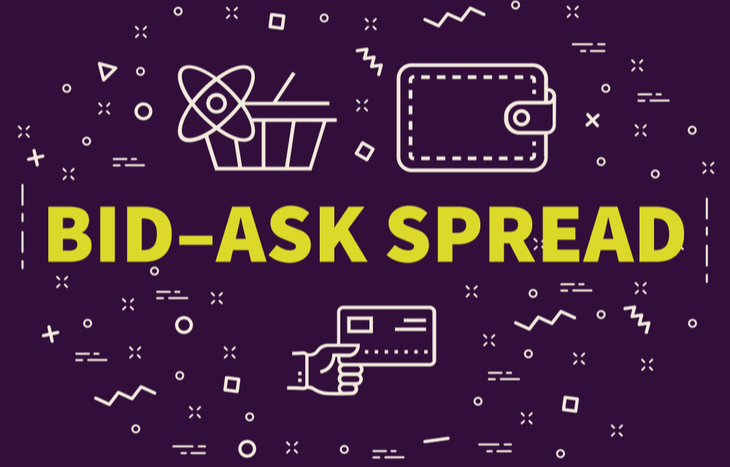What is a Bid-Ask Spread?

When buying, selling or trading securities, investors need to be mindful of the bid-ask spread. While many new investors simply look at the current trading price of the stock, bid-ask price is an important indicator of many things, such as the stock’s liquidity and potential volatility.
What you’re willing to pay for a security vs. what someone else is willing to sell it for can be very different! The bid-ask spread is a representation of this range. On one end is the ask price; on the other, the bid price. The difference between those two is the spread. No matter which side of the transaction you’re on, bid-ask dictates the price of your shares in the open market.
Bid-ask is an ever-changing scale, with prices continually updating throughout each trading period. As a clear representation of supply and demand, it’s a fundamental metric that every investor needs to look at before they transact.

What is the Bid Price?
The bid price is the highest price a buyer is willing to pay for a stock. The bid price represents demand. The closer the bid price is to the ask price, the more buyers are in agreement with sellers about the true value of the security.
What is the Ask Price?
The ask price is the lowest price a seller is willing to accept for their shares of a stock. Ask price represents supply. The closer the ask price is to the bid price, the more sellers agree with buyers on the value of the security they hold.
Bid-Ask Spread Example
To better understand bid-ask spread, let’s take a look at two real-life examples. One is a very tight spread and one is a larger spread.
- Abbott Laboratories (NYSE: ABT) had a bid-ask spread of $135.08 – $135.05 on January 4, 2022. This tight grouping signals low volatility and general agreement among buyers and sellers about the stock’s share price.
- GameStop (NYSE: GME) had a bid-ask spread of $144.40 – $144.75 on January 4, 2022. This gap in bid-ask signals buyers and sellers aren’t in total agreement on price, and that there’s a higher cost to transact this stock.
In these examples, the cost associated with buying ABT stock would only be ~$0.03 per share (the spread), while the cost to buy GME stock would be ~$0.35 per share. While seemingly trivial, in context, GameStop has 10 times the spread that Abbott Laboratories does!
Where are Bid-Ask Spreads Used?
Anywhere there’s free exchange of securities, there’s a bid-ask spread involved. Stock and bond investors will see these spreads as they purchase securities, and can use them to determine the relative supply and demand of each. For someone like a forex investor, bid-ask spread shows potential profitability when trading currency pairs. Fundamentally, they represent the same thing and are of equal importance to both types of investors.
Even real property has something of a bid-ask spread. The listed price of property represents the ask, while owners field bids. The difference between the ask and the bids ends up becoming the negotiation ground toward acquisition (or retention). So long as there are two sides (supply and demand), there’s a bid-ask spread present.
Representation of Liquidity
Bid-ask spreads are a direct representation of a security’s liquidity. The closer the spread, the more agreement there is on price and the fewer barriers to transacting. On the flip side, the larger the spread, the more disagreement there is on price, which prevents transactions. In a nutshell: smaller bid-ask ranges signal better liquidity.
Typically, large- and mega-cap companies have tight bid-ask spreads, since they change hands often. Conversely, small- and micro-cap companies have large bid-ask spreads and limited liquidity. There’s a much greater level of supply and demand for bigger companies and much less for smaller ones.
This isn’t to say that traders can’t transact securities with bigger bid-ask ranges. it can simply take longer for brokers to fill these transactions, and they might cost the investor more.
Factors that Influence Bid-Ask Spread
While bid-ask is a simple representation of implied liquidity and the agreement (or disagreement) of investors on price, several other factors can impact this range. Investors should also look at the following elements when evaluating bid-ask spread:
- Liquidity. How many buyers and sellers are transacting the security?
- Volatility. The greater the volatility, the wider the bid-ask range tends to become.
- Market cap. The larger the company, the tighter its bid-ask spreads are.
- Sector. Some sectors simply have higher bid-ask spreads due to their nature.
- Stock price. Lower prices have higher spreads, and vice-versa.
- Type of order. Bid-ask ranges can change based on market, limit and stop orders.
Keep all these factors in mind as you approach buying or selling a stock. It’s easy to look at the bid-ask range and take it at face value; however, these factors inform why it’s tight or wide, and allow for better decision-making.
Make Bid-Ask Evaluation Part of Every Trade
It’s easy to look at a stock’s current share price and decide whether to transact it or not based on your investing strategy. Before you do, pay mind to the bid-ask spread. It’ll tell you how liquid the stock is and whether there’s general agreement between buyers and sellers about the price. If you’re selling, you’re helping to set the ask price; if you’re buying, you’re helping to set the bid price. Either way, your transaction contributes to the greater benchmark for supply and demand, which is what keeps the public markets turning.






